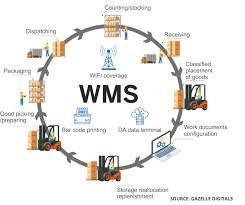
Effective warehouse management is critical for optimizing operations and achieving cost efficiencies. When partnering with a third-party logistics (3PL) provider, businesses can leverage expertise and resources to enhance warehouse performance. Here’s how to maximize efficiency and space utilization with 3PL warehouse management.
Comprehensive Inventory Management
A key benefit of utilizing a 3PL for warehouse management is access to robust inventory management capabilities:
- Real-time Visibility: Leverage advanced systems for accurate, real-time inventory tracking.
- Optimized Stock Placement: Utilize data-driven insights to determine optimal stock placement for efficient picking and packing.
- Cycle Counting: Implement regular cycle counting to maintain inventory accuracy and reduce discrepancies.
Space Optimization Strategies
Partnering with a 3PL can help optimize warehouse space utilization:
- Warehouse Layout Design: Collaborate with the 3PL to design an efficient warehouse layout that minimizes travel time and maximizes storage capacity.
- Vertical Storage Solutions: Explore vertical storage options such as mezzanines or automated systems to utilize vertical space effectively.
- Dynamic Slotting: Employ dynamic slotting techniques to adapt storage locations based on product demand and seasonality.
Streamlined Order Fulfillment
Efficient order fulfillment is essential for customer satisfaction and operational efficiency:
- Pick and Pack Efficiency: Leverage 3PL resources to streamline pick and pack processes, reducing order processing times.
- Wave Planning: Implement wave planning strategies to optimize order batching and minimize order turnaround times.
- Cross-Docking: Utilize cross-docking services to expedite shipments and reduce storage needs for inbound inventory.
Technology Integration
Integrating advanced technology is key to enhancing warehouse management:
- WMS Integration: Integrate with the 3PL’s Warehouse Management System (WMS) for seamless data sharing and process automation.
- IoT and RFID Solutions: Explore IoT and RFID technologies for improved asset tracking and inventory visibility.
- Automation and Robotics: Collaborate with the 3PL to implement robotic automation for repetitive tasks like picking and packing.
Continuous Improvement Initiatives
Implement continuous improvement initiatives to optimize warehouse operations:
- Performance Analytics: Leverage data analytics to identify bottlenecks and areas for improvement in warehouse processes.
- Kaizen and Lean Principles: Apply lean manufacturing principles to eliminate waste and optimize workflows.
- Regular Performance Reviews: Conduct regular performance reviews with the 3PL to drive operational excellence and address challenges proactively.
Cost Optimization
Partnering with a 3PL can lead to cost savings through improved efficiency and resource utilization:
- Shared Resources: Benefit from shared resources and infrastructure, reducing capital investment in warehouse facilities.
- Economies of Scale: Leverage the 3PL’s scale to negotiate better rates with carriers and suppliers.
- Variable Cost Structure: Shift fixed costs to variable costs, aligning expenses with business demand fluctuations.
Conclusion
By leveraging a strategic partnership with a 3PL for warehouse management, businesses can enhance efficiency, optimize space utilization, and drive cost savings. Implementing comprehensive inventory management, space optimization strategies, streamlined order fulfillment processes, and technology integration are key to maximizing warehouse performance with a 3PL.